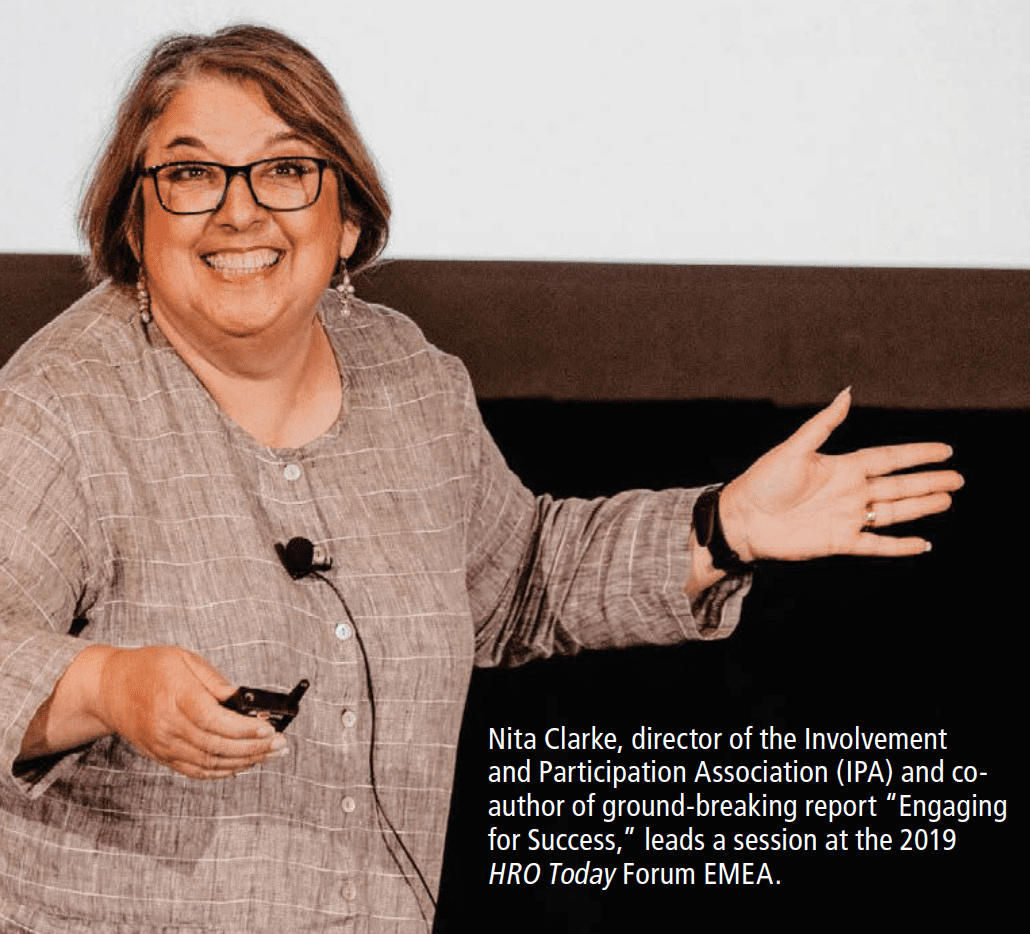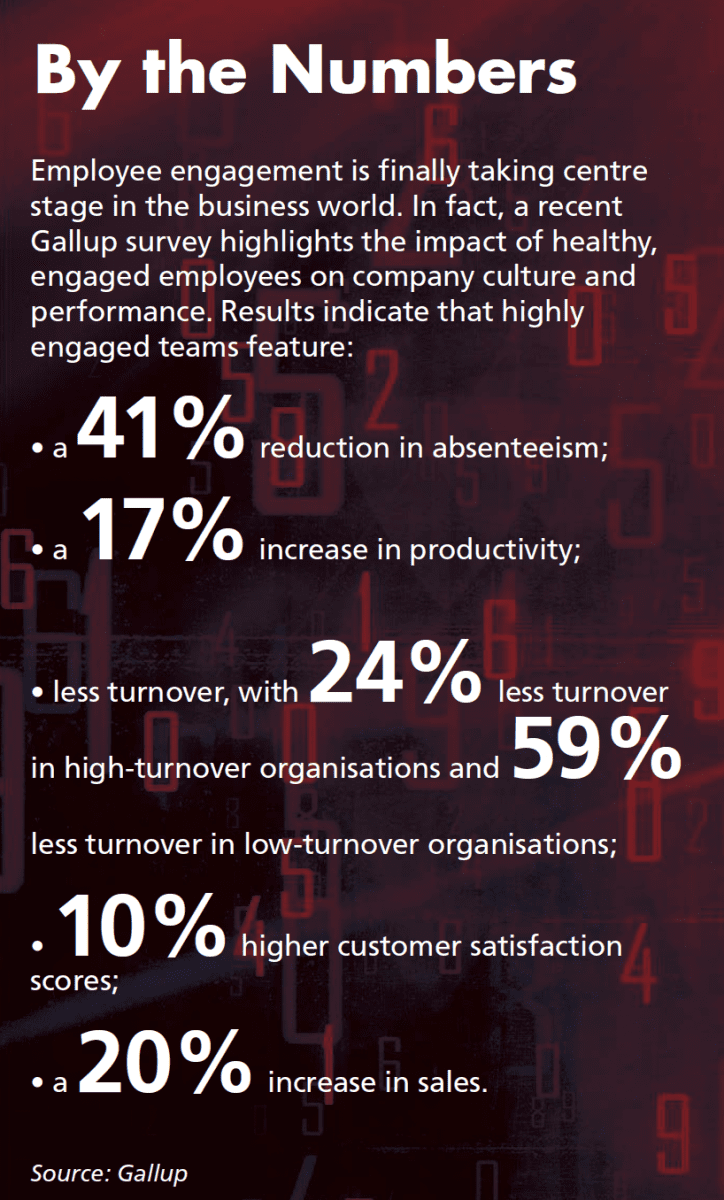By adopting four management practices, employers can ensure their workforce remains engaged and productive.
By Simon Kent
If there’s one constant running through all HR agendas, it is the task of getting the best from employees. Today’s labour market, especially across EMEA, is candidate-led. There are quite simply not enough appropriately skilled people to fill the supply of available jobs, and as technology continues to evolve, this situation will only become more pronounced. How can organisations be certain to retain their workers and get the best from the talent they already have?
“People are your only asset,” asserts Nita Clarke, director of the Involvement and Participation Association (IPA). “If they can’t do the job they’re meant to do, you might as well just throw your money away.”
 Set within today’s volatile, uncertain, complex, and ambiguous world, one could be forgiven for thinking that Clarke’s mission -to maximise employee engagement in an effort to impact productivity -is a relatively new one. Indeed, her own work on the subject came to a focal point in 2009 with a report she co-authored to the UK government on enhancing performance through employee engagement. Yet her current organisation has a history of some 125 years addressing, as she puts it, “the sweet spot” between the employer and employee.
Set within today’s volatile, uncertain, complex, and ambiguous world, one could be forgiven for thinking that Clarke’s mission -to maximise employee engagement in an effort to impact productivity -is a relatively new one. Indeed, her own work on the subject came to a focal point in 2009 with a report she co-authored to the UK government on enhancing performance through employee engagement. Yet her current organisation has a history of some 125 years addressing, as she puts it, “the sweet spot” between the employer and employee.
The issue of employee engagement isn’t simply an economic one. Yes, engagement impacts productivity, but Clarke goes further to say that without proper engagement, an employer will have a well-being issue within its ranks. And if the mental health of workers wasn’t important enough, engagement also has a positive linkage to factors such as good customer care, innovation, increased profits, and retention.
There is little doubt that people used to be mismanaged and regarded as simply a unit of production. In recent years, employers have adopted more sophisticated techniques to engage their employees, and this evolution has not just been driven by changes in the type of work available and the way it is carried out. There are more pressures coming from the workers themselves, Clarke says, including:
- the need for fairness and trust;
- the need for meaning and purpose-driven work;
- the need to be empowered in the workplace; and
- the need for employers to appreciate and tap into what she identifies as “an increasingly diverse and decreasingly deferential workforce.”
Creating and sustaining a workplace which supports these elements is not easy, but before anything can happen, Clarke states that employers must make a choice: to regard their people as a problem that needs to be monitored and controlled, or to see them as part of the solution and a resource that can be inspired, respected, and trusted.
Enabling Engagement
According to Clarke, there are four key enablers which can help businesses realise engagement with their employees.
 1. Build a strategic narrative. The first step is to offer strong leadership that demonstrates where the organisation has come from and where it is going. If employees are able to understand and identify with the company’s journey, then they can more closely see how their contribution makes a difference.
1. Build a strategic narrative. The first step is to offer strong leadership that demonstrates where the organisation has come from and where it is going. If employees are able to understand and identify with the company’s journey, then they can more closely see how their contribution makes a difference.
2. Engage managers. Good line management is crucial to engaged employees, argues Clarke, and that means managers who focus on their people and treat them as individuals, coaching and stretching them in their work.
3. Listen to the employee voice. Alongside this positive communication is the third key enabler: listening to the employee voice. Clarke advocates allowing this voice to “permeate” the organisation, including -and going beyond -positive relations with trade unions and employee organisations.
4. Maintain integrity. The final enabler is ensuring the “values on the wall” are reflected in day-to-day behaviour across the business, from executive leaders and senior managers through to line management and individual employees. Integrity, she says, creates trust among the workforce which is “the essential foundation of engagement.”
“If the values on the wall do not match the behaviour experienced in the organisation, then what can employers expect from their employees?” challenges Clarke, indicating that today’s employees are wise enough to know when an organisation is truly living up to its values and when it is just paying lip service.














